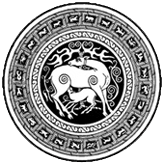 |
 |
 |
>> Home
>> Announcement
>> General Info
>> Committees
>> Registration
>> Support
>> Photo Galery
Ivane Javakhishvili Tbilisi State University
2nd International Caucasian Symposium on Polymers and Advanced Materials
Announcement
Dear Colleagues,
In 7-10 September of 2010 takes place 2nd Caucasian Symposium in Polymers and Advanced Materials organized by Iv Javakhishvili Tbilisi State University. The purpose of the conference is to encourage scientists working in polymer and advanced chemistry to present their investigations dedicated to problems and discoveries in above mentioned fields. Also ICSP&AM 2 will help to introduce effectively innovative scientific researches of Georgian and Caucasian scientific teams, which are less known for world scientific society. Therefore, it will lead to the developement of polymer science and will be helpful for solving the problems, which face the modern world. Conference will give a push to new international linkages and joint researches.
For scientists from all over the world this is a chance to visit beautiful country Georgia. Georgia occupies an area of about 70000 sq km (population 5,5 million). It takes up the central and Western pairs of Transcaucasia. In the West it is open the Black sea. Georgia is a mountainous country. In the North rises the greater Caucasus system of mountain ranges and is situated at the boundary of two climatic zones - moderate and subtropical. There are many rivers and they flow into the Black and Caspian seas. Borders: in the North - Russia; In the sourth - Armenia, Turkey; In the south-east - Azerbaijan; in the west - the Black sea. Georgia is rich in mineral resources. The Republic has about 1000 mineral springs, which vary in their chemical content. The best known are the springs at Borjomi. Four hundred varieties of the grapevine cultivated in Georgia make her a land of classical wine-making.
About GeorgiaGeorgia is the ancient country with more than 25 century history. The capital city Tbilisi (where the conference takes place) is capital from 6th century. In Georgia you can find a lot of historical monuments. The Georgians themselves tell the following story about how they came to possess the land they deem the most beautiful in the world. When God was distributing portions of the world to all the peoples of the Earth, the Georgians were having a party and doing some serious drinking. As a result they arrived late and were told by God that all the land had already been distributed. When they replied that they were late only because they had been lifting their glasses in praise of Him, God was pleased and gave the Georgians that part of Earth he had been reserving for himself. |
|||
Oldest HumanGeorgia is the homeland of the oldest human who ventured out of Africa and traveled to Europe. In 1999 and 2001 in Dmanisi, Georgia, was found fossil hominid skulls and jaws. The town of Dmanisi is first mentioned in the 9th century as a possession of the Arab emirate of Tbilisi, though the area had been settled since the Early Bronze Age. An Orthodox Christian cathedral – “Dmansis Sioni” – was built here in the 6th century. Located on the confluence of trading routes and cultural influences, Dmanisi was of particular importance, growing into a major commercial center of medieval Georgia. The town was conquered by the Seljuk Turks in the 1080s, but was later liberated by the Georgian kings David the Builder and Demetrios I between 1123 and 1125. The Turco-Mongol armies under Timur laid waste to the town in the 14th century. Sacked again by the Turkomans in 1486, Dmanisi never recovered and declined to a scarcely inhabited village by the 18th century. |
The Alphabet
The Georgian alphabet is the script currently used to write the Georgian language and other Kartvelian languages (such as Mingrelian), and occasionally other languages of the Caucasus (such as Ossetic and Abkhaz in the 1940s). The modern Georgian alphabet has thirty-three letters. Originally it had more, but some letters have become obsolete. The Georgian script makes no distinction between upper and lower case. Georgian historical tradition attributes the invention of the Georgian alphabet to Parnavaz I of Iberia in the 3rd century BC. There are other interpretations. One of the more contentious is that the similar alphabet called as asomtavruli was invented in 412 BC by Georgian priests of the cult of Matra (Persian Mithra), and reformed in 284 BC by king Parnavaz I of Iberia. |
||
The Golden Fleece
|
|||

